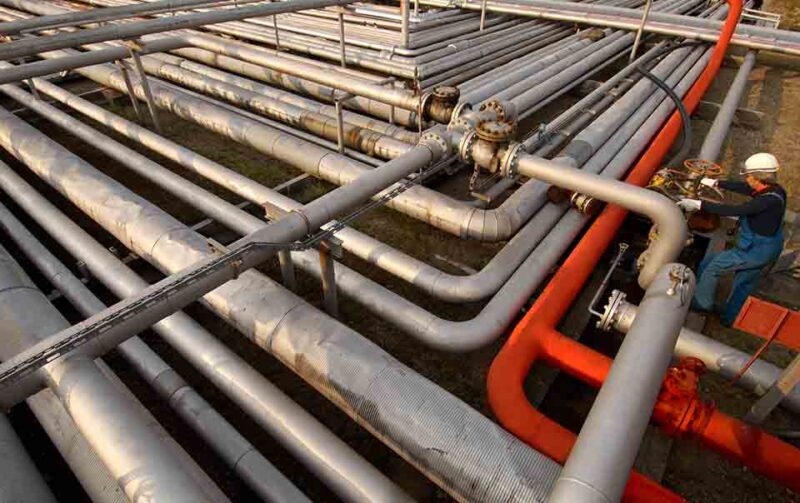The plumbing system of a home is essential for maintaining health and comfort. Without it, everyday tasks like showering, cleaning dishes, and doing laundry become impossible. Breacher pipes play an important role in keeping a plumbing system running efficiently and safely.
This article will look at the purpose of breacher pipes, discuss how they work to maintain a healthy plumbing system, and provide tips on how to install them correctly. By understanding the critical role that breacher pipes have in protecting your home’s plumbing system, you can be sure that you are taking all necessary steps to keep your family safe and comfortable.
1. Benefits of Breacher Pipes in Plumbing Systems
Breacher pipes are an essential component of a healthy and efficient plumbing system. These pipes provide many benefits, including increased water pressure, improved drainage, and less clogging from debris buildup. By having more effective water pressure and improved drainage, these pipes help to prevent costly damage caused by leaks or flooding.
Additionally, breacher pipes are designed with a special coating that helps to protect against corrosion and other forms of wear and tear over time. This coating is also beneficial in keeping the pipe clean by reducing the amount of dirt and residue that can build up inside them. However, in the unfortunate event that your breacher pipes do require repairs, it’s important to work with a trusted plumbing professional who understands the unique needs of these specialized pipes.
If you’re in Adelaide and in need of breacher pipe repairs, consider reaching out to Breecher Pipe Repairs in Adelaide. Their team of experienced plumbers can help you quickly diagnose and fix any issues with your breacher pipes, ensuring that your plumbing system stays healthy and efficient for years to come. Overall, using breacher pipes in your plumbing system can offer numerous advantages, including cost-effectiveness, durability, and superior protection against potential damages caused by leaks or floods.
2. Maintenance Requirements for Breacher Pipes

Maintaining breacher pipes is a crucial part of keeping a healthy plumbing system. To ensure that they remain in working order, it’s important to inspect them regularly and carry out any necessary maintenance tasks. Regular cleaning can help prevent blockages while checking for signs of wear and tear will guarantee early detection of any problems so they can be addressed before more serious issues arise. Its also wise to replace old or damaged parts with new ones as soon as possible to maintain optimum performance.
In addition, there are some additional steps you should take when it comes to taking care of your breacher pipes:
- Ensure the connectors between different components are securely connected at all times;
- Use only compatible products with the piping system;
- Examine exposed sections for corrosion on a regular basis; and
- Check drain traps for clogs due to foreign objects such as hair or food waste. By following these simple maintenance tips, you can ensure your plumbing remains healthy and efficient over time!
3. Troubleshooting Common Problems with Breacher Pipes
When dealing with breacher pipes, there are a few common problems that can arise. The first is blockages due to debris buildup or foreign objects getting stuck in the pipe. If this happens, it’s important to identify and remove the blockage as soon as possible before it causes further damage.
Another common problem associated with breacher pipes is corrosion of metal components or deterioration of rubber seals caused by temperature fluctuations and exposure to harsh chemicals from water sources used in plumbing systems. To prevent these issues from occurring, regular maintenance such as pressure testing should be performed on a regular basis to ensure that the system remains in good working order. In some cases, you may also need professional help if more advanced solutions are needed for any repairs or replacements required for your breacher pipes.
4. Tips for Installing and Replacing Breacher Pipes

When it comes to installing or replacing breacher pipes, there are a few key tips that can help ensure the job is done correctly. First and foremost, make sure you purchase the correct size of pipe for your project – too large and it won’t fit properly, too small, and water pressure could be affected.
It’s also important to check for any damage to existing pipes before purchasing new ones; this will help reduce the risk of leakage when connecting them together. Additionally, if possible use flexible connectors as these have less potential for cracking than rigid ones. Finally, always use quality sealant around every joint to prevent moisture from seeping through gaps in the pipe wall. Following these simple steps can go a long way towards ensuring a successful installation or replacement of breacher pipes when maintaining a healthy plumbing system.
5. Advantages of Using Breacher Pipes over Other Types of Plumbing Components
Breacher pipes are an essential component of a healthy plumbing system. They offer several advantages that set them apart from other types of plumbing components. Firstly, breacher pipes are highly durable compared to other materials used in plumbing systems.
This means that they can last for many years without needing maintenance or repair work and will therefore save homeowners money in the long term. Furthermore, they are able to withstand extreme temperatures and pressure changes which is important when it comes to keeping a plumbing system functioning properly. Another advantage is that breacher pipes are resistant to corrosion and rusting making them ideal for use in external settings such as bathrooms or kitchens where water flow may be frequent.
This makes them much more reliable than conventional metal or plastic piping components which can easily corrode over time resulting in costly repairs down the line. Finally, breacher pipes have excellent insulating properties making it easier to maintain constant temperature levels throughout the building’s internal network of pipework – another helpful factor for efficient plumbing systems!



